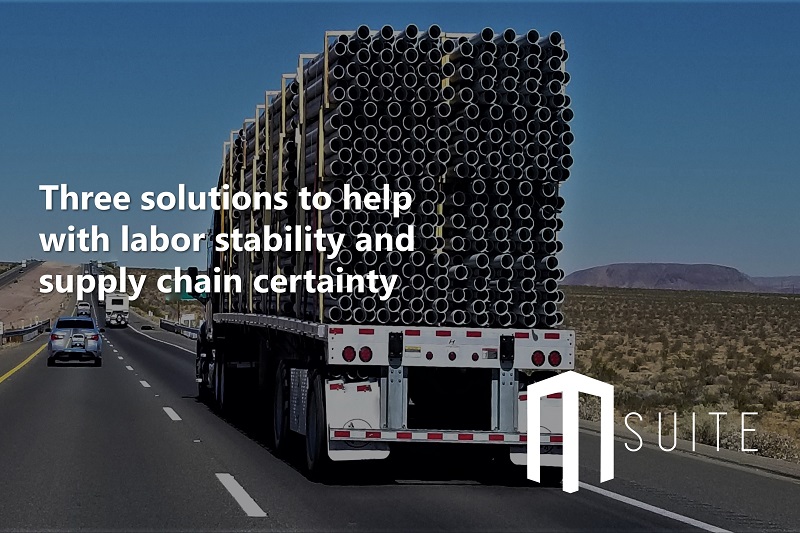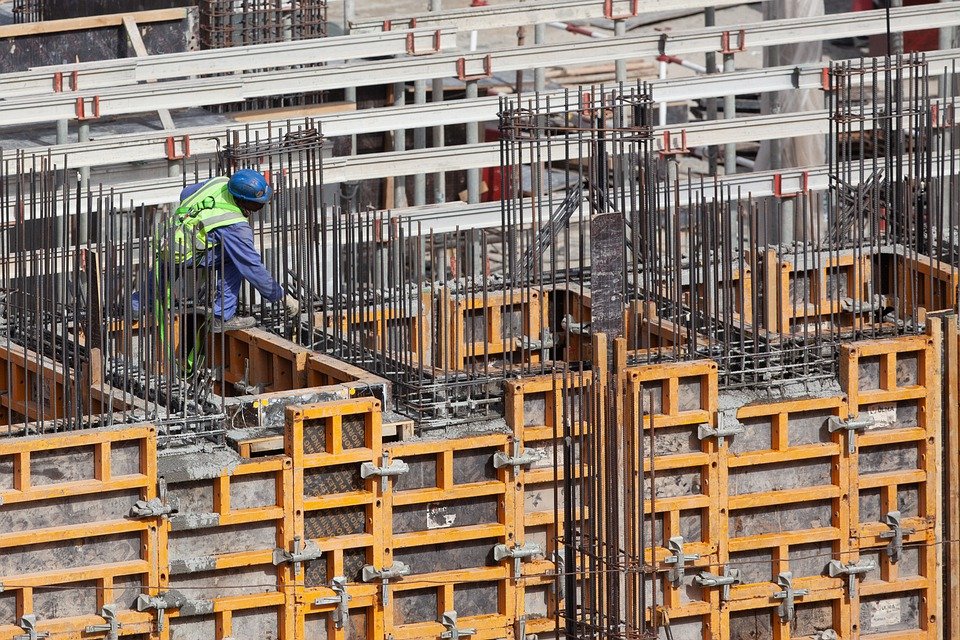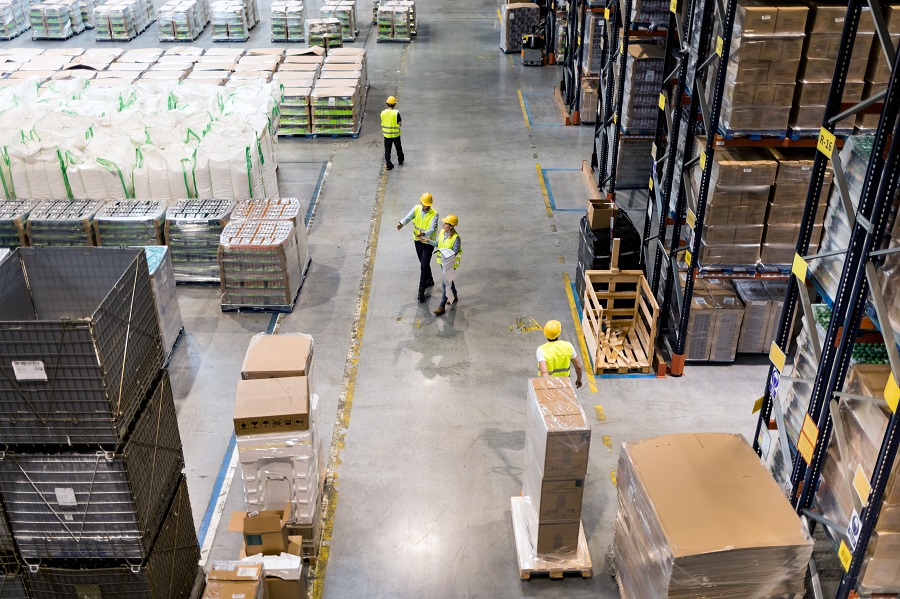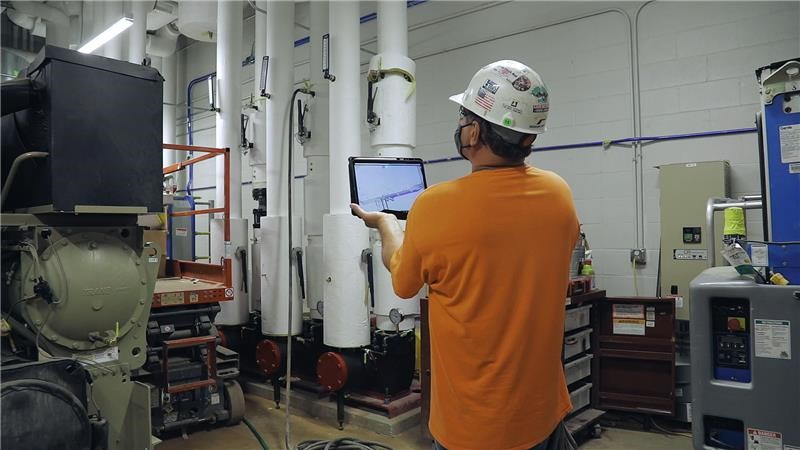In the challenging construction environment, here three solutions to help with labor stability and supply chain certainty.
Construction firms are increasingly turning to technology, modular, and prefabrication practices, according to Deloitte’s 2022 industry outlook report. A significant number surveyed (43%) said they plan to invest in new design processes over the next year, and prefabricated and modular construction is at the forefront as they look to distribute their sourcing and build capabilities.
Construction leaders have continually faced many issues that don’t seem to disappear. Construction continues to be challenged after two years of juggling market instability, labor challenges, supply chain uncertainty, and project backlogs plaguing the industry.
Initially, there are human resource challenges; talent is hard to attract and retain, but predictability is an issue even when you have a great team. In the last 22 months, pandemic-related absences have cost U.S. firms more than $78.4 billion. Managing a disrupted supply chain and rising material costs has been a juggling act. With costs of materials leaping nearly 21% last year, schedules and deliveries on site are guessing games.
Construction companies are combatting the challenges by bringing innovation and new building methods to avoid some pitfalls with traditional construction. For example, many construction leaders are turning to modular and prefabrication to gain predictability, better quality, and stability.
Are these digital technologies and prefabricated systems enough to ensure certainty? Yes, for the most part. External factors will occasionally wrench in the best-laid plans, but prefabricated construction has proven time in and time out that it’s more dependable and safer than stick building.
In this article, we’ve identified three major reasons construction executives utilize prefabrication to improve productivity, labor efficiency, and timelines for supply chain stability.
1. Prefab construction requires fewer people on job sites
Industrialized construction leverages technology and advanced manufacturing methods such as modular and prefabrication to automate the creation of building components. This translates to requiring less labor on the jobsite for assembly. It also changes the dynamic of the type of staff needed on-site and for how long.
In a prefabricated interior system, timber, glass, walls, and many other internal components are manufactured at a warehouse or facility. For example, power and technology networks can be embedded into walls requiring fewer subcontractors are necessary on the construction jobsite.
Major challenges such as managing too many schedules, driving too many subcontractors, and prefabricated construction systems help mitigate many of these issues.
2. Diverse inventory and supplier approaches reduce supply chain woes
Well-established industrialized construction companies invest in a geographically diverse supplier base and establish long-term relationships with partners who help avoid higher material costs and navigate supply chain challenges.
Technology that helps manage raw material inventory protects against shipping delays and other external disruptions. In addition, strategically using raw material inventories can help ensure meeting short lead times for clients and partners.
While no construction company is entirely immune to the spikes in commodity prices that have recently occurred, a diversified supplier base strengthens your ability to use competition in competitive bids to keep materials costs somewhat down.
3. Construction Tech to support the efficient building process
In a typical conventional construction scenario, interior space must be framed then dry-walled, which is messy and time-consuming. Then, in the middle of the process, a client asks for changes or has an issue with the building envelope that requires modifications. Now more staff are needed. As a result, the project cost increases and pushes timelines.
Fewer people are needed on-site when you can make many of your design decisions in advance, and you can protect against these disruptions. Technology enables that.
For example, digital twins offer real-world data paired with digital simulation so a space can be designed and adapted before being constructed. In addition, several tech platforms enable designers to produce custom designs of any space and visualize them using virtual reality.
Digital twins leveraged by virtual reality help increase efficiencies and reduce the need for sizeable on-site construction teams because changes can be implemented, and spaces can be adapted before manufacturing the materials for the project.
Once the product design is approved, it is sent directly to the fabrication shop floor, where operators cut components into custom configurations, mitigating substantial material waste and reducing human error. Prefabricated components are cut with precision and quality checked before being shipped and installed. Over the decades, industrialized construction has proven itself but is finally ready for the mainstream.
Pushing forward to 2023
Next year will continue challenging the construction industry but modular and prefabrication solutions are helping the industry achieve greater levels of certainty and confidence.
When construction professionals experience a prefabricated process for the first time, they appreciate how efficient and methodical it is to create a complete, ready-to-install interior or exterior construction system in a factory environment versus traditional on-site methods. And because it’s a system that combines digital tools, customizable products, and services, it allows innovative builders to create amazing adaptable spaces that are future-ready, today.










